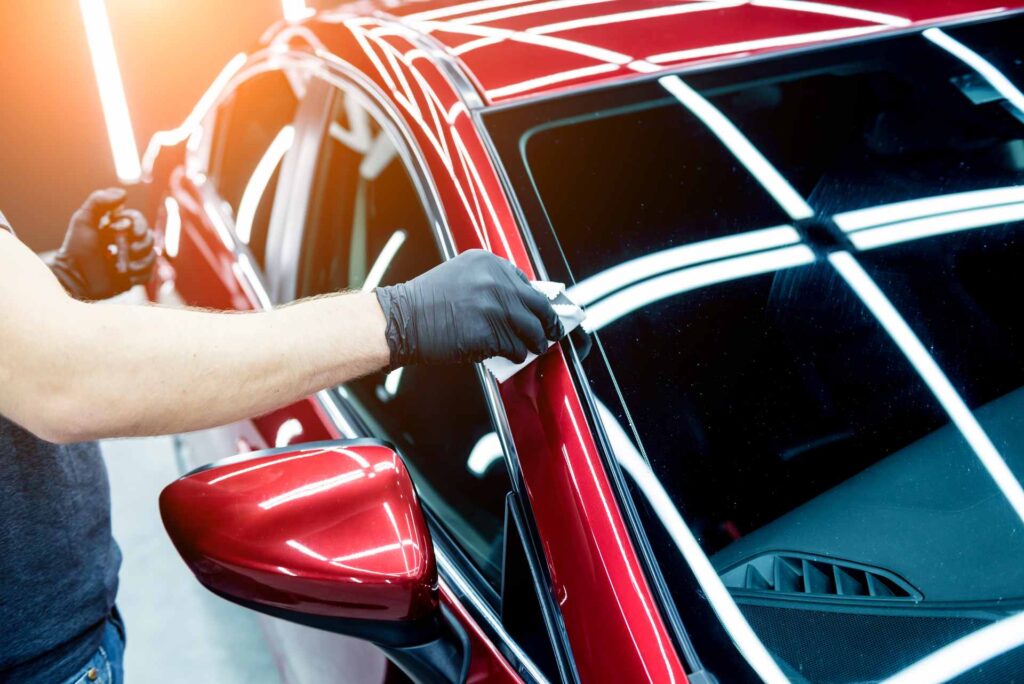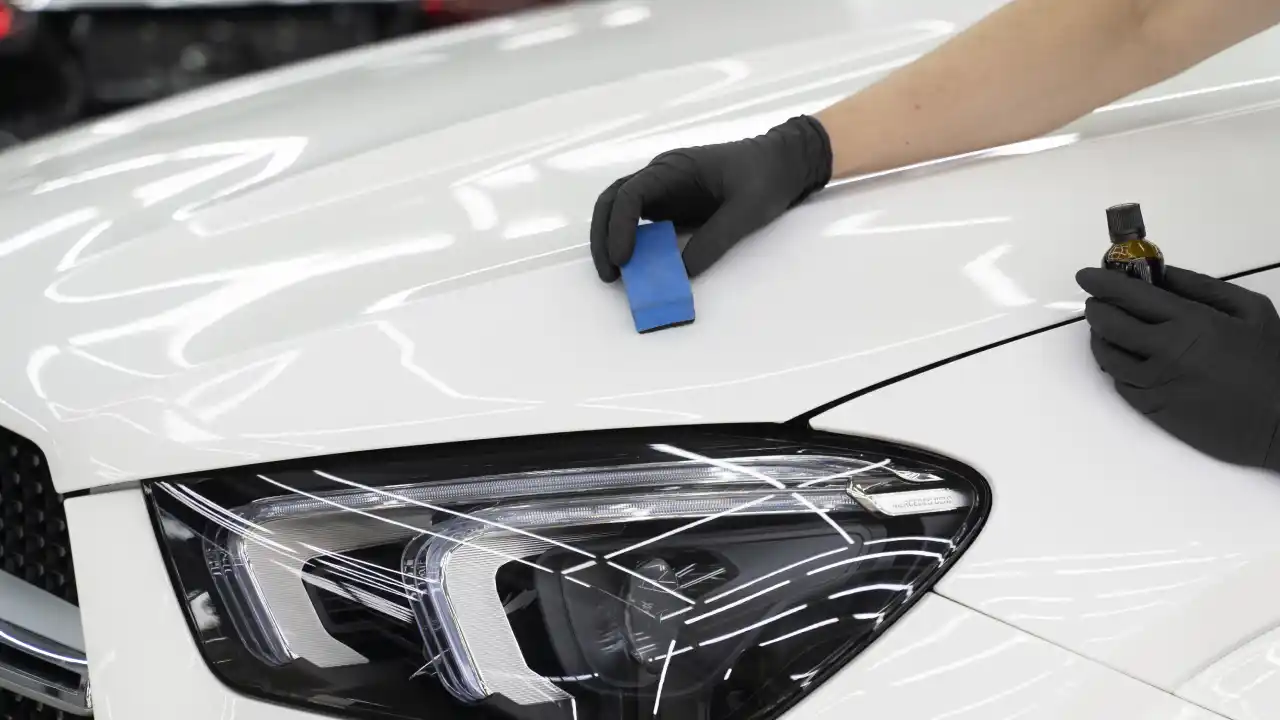Transform Your Experience with Ceramic Coating: A Step-by-Step Process
Transform Your Experience with Ceramic Coating: A Step-by-Step Process
Blog Article
Recognizing the Scientific Research Behind Ceramic Coating for Boosted Car Sturdiness
The scientific research of ceramic finish is revolutionizing vehicle maintenance by supplying an awesome guard versus rough ecological factors. As we discover the detailed structure and application procedure of ceramic finishings, we discover the tricks behind their premium security and long life (ceramic coating). Just how does this contrast to standard approaches, and what ramifications does it have for car maintenance in the lengthy term?

Make-up of Ceramic Coatings
Ceramic finishes are mainly made up of silicon dioxide (SiO2), which is acquired from natural materials like quartz and sand. In addition to SiO2, ceramic finishes commonly include titanium dioxide (TiO2) for boosted UV protection and raised resistance to ecological contaminants.
The solution of ceramic coverings is a thorough procedure where the focus of SiO2 can considerably affect the layer's performance. Higher SiO2 content typically results in better longevity and firmness, adding to the finishing's capability to stand up to scratches and chemical etching. The balance of parts is crucial; too much SiO2 can make the finishing brittle, while as well little can jeopardize its protective buildings.
Producers might likewise incorporate extra substances, such as polysilazane, to boost adaptability and convenience of application. These additives boost the layer's hydrophobic residential properties, making certain water and pollutants grain off the surface area easily. This engineered make-up underscores the efficiency of ceramic finishings in securing a car's exterior against a variety of negative problems.
Application Refine Explained
Applying a ceramic finishing to a car involves a number of crucial actions, each necessary to guaranteeing optimal attachment and efficiency of the protective layer - ceramic coating. The procedure begins with a detailed clean and purification of the vehicle's surface to get rid of dirt, crud, and previous waxes or sealants. This action is essential as any pollutants left on the surface area can impede the layer's ability to bond properly
Complying with the first cleaning, the next step involves polishing the lorry to remove any type of flaws, such as swirl marks or scrapes. Polishing guarantees a smooth surface area, which is important for the covering to stick correctly and provide an uniform coating. After polishing, a surface area prep work spray is made use of to eliminate any staying deposits and make sure that the surface is totally clean.

Protective Advantages
Usually hailed for its remarkable safety qualities, a ceramic finishing offers many benefits that considerably improve lorry toughness. At its core, ceramic finishing creates a hard, semi-permanent barrier over an automobile's exterior, which acts as a guard versus various ecological threats.
Additionally, ceramic finishings display hydrophobic homes, suggesting they fend off water and help with a self-cleaning effect. This quality minimizes the adherence of dirt and mud, streamlining upkeep and cleaning processes. The coating's resistance to chemical etching additionally guarantees that the car's surface stays unblemished despite direct exposure to extreme cleaner and contaminants.
Along with these protective advantages, the ceramic covering enhances a car's aesthetic appeal by creating a glossy surface that emphasizes color deepness and clearness. This not only maintains the vehicle's site aesthetic appeal but also contributes to its long-term value by maintaining the honesty of its outside in time.
Comparing to Conventional Approaches
Unlike traditional approaches of automobile security, such as shaving or sealants, ceramic layers offer a more lasting and long lasting option. Where waxes and sealers commonly offer a short-lived layer of defense, commonly calling for reapplication every couple of months, ceramic layers develop a semi-permanent bond with the automobile's paint. This bond produces a protective layer that is resistant to environmental contaminants, UV damages, and minor abrasions.
Typical waxes are primarily composed of all-natural parts like carnauba wax, offering a shiny surface yet lacking the durable protective high qualities of ceramic finishings. Sealers, while synthetic and offering a little much better longevity than waxes, still fall short in contrast to the durability and chemical resistance of ceramic layers. The sophisticated innovation of ceramic coverings incorporates nanotechnology, which enables them to fill out tiny imperfections in the paint surface area, resulting in a smoother and much more hydrophobic coating.
In terms of application, ceramic coatings need a more thorough procedure, commonly demanding specialist installation to ensure optimal efficiency. This contrasts with the relatively straightforward application of sealants and waxes, which can be applied in the house. The exceptional defense and visual enhancement offered by ceramic coatings warrant the financial investment for those seeking long-term car conservation.
Durability and Maintenance
Just how does the durability of ceramic layers translate into convenience of upkeep for automobile proprietors? The advanced formulation of ceramic coverings provides a robust protective layer on the car's surface, which considerably extends the life expectancy of the cars and truck's outside coating. This sturdiness indicates that the layer serves as a link shield versus environmental impurities such as UV rays, bird droppings, and roadway crud, which can otherwise deteriorate paintwork in time. Consequently, cars covered with ceramic products need much less regular washing and describing efforts, consequently lowering maintenance time and expenses for proprietors.
Furthermore, the hydrophobic nature of ceramic coatings allows water and other fluids to bead up and roll off the surface area, bring dirt and particles with them. While the finishing itself is resilient, it is not totally maintenance-free. Hence, ceramic coatings supply a useful balance between long-lasting toughness and simplified upkeep for automobile care.
Conclusion
Ceramic layers, with their sophisticated chemical composition of silicon dioxide and titanium dioxide, supply an awesome barrier against environmental damages, significantly enhancing automobile resilience. The hydrophobic residential or commercial properties over at this website advertise self-cleaning, lowering upkeep efforts and maintaining visual charm. When compared to standard techniques, ceramic layers use premium security versus UV rays, oxidation, and chemical etching. This innovation extends the life expectancy of automobile outsides, making it an innovative solution for long-term conservation and marginal maintenance.
The solution of ceramic finishings is a meticulous procedure where the concentration of SiO2 can dramatically affect the coating's performance.Using a ceramic finish to a vehicle includes several important steps, each necessary to ensuring ideal bond and performance of the safety layer.Typically hailed for its outstanding safety top qualities, a ceramic layer offers numerous benefits that substantially boost lorry resilience. The advanced formulation of ceramic coatings provides a durable safety layer on the vehicle's surface area, which substantially extends the lifespan of the car's exterior surface.Ceramic finishes, with their sophisticated chemical make-up of silicon dioxide and titanium dioxide, provide an awesome obstacle versus environmental damages, substantially improving automobile sturdiness.
Report this page